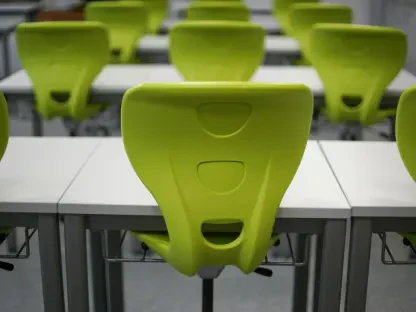The Los Angeles Unified School District (LAUSD) faced a troubling incident when officers from the U.S. Department of Homeland Security (DHS) attempted to enter Russell Elementary School and Lillian Street Elementary School in search of students. This alarming episode has sparked widespread concern among educators and the community, as it marks one of the first confirmed attempts of DHS agents entering schools since the Trump administration’s revised immigration policies were put into effect. The occurrence has ignited fears about the potential impact of these policies on the educational environment, which traditionally serves as a safe and supportive space for all students.
DHS Officers Attempt School Entry
On April 7, agents from DHS’s Homeland Security Investigations (HSI) sought entry into Russell Elementary School and Lillian Street Elementary School in an effort to locate specific students. School officials, adhering to LAUSD protocols and consulting with legal counsel, denied the agents access as they did not present court orders or warrants. The agents ultimately left the premises without incident, but the mere presence of federal officers stirred significant apprehension and anxiety within the school communities.
The attempted entry of DHS agents has raised critical questions about the enforcement of immigration policies in educational settings and the potential consequences for students and families. School districts across the nation have traditionally been perceived as safe havens, where students can focus on learning without the fear of external threats. This incident has challenged that perception, highlighting a growing tension between federal enforcement actions and local educational authorities’ efforts to protect their communities.
School Safety and Local Response
In response to the DHS incident, both Russell and Lillian Street Elementary Schools swiftly communicated with parents and students, reaffirming their commitment to maintaining a secure and supportive environment. They informed the community about the presence of federal agents on campus and reiterated their dedication to student safety. These actions aimed to soothe the fears that had been ignited by the unexpected visit of DHS officers.
Beyond the immediate response from Russell and Lillian Street Elementary Schools, other schools within LAUSD also took precautionary measures by notifying parents and guardians about the incident and emphasizing their commitment to safeguarding students. This collective effort by the district underscores a broader concern about the potential reach of immigration enforcement activities into educational settings. Additionally, mental health support services were made available on campus to assist students and employees who were impacted by the stressful situation, recognizing the profound emotional toll such incidents can take on individuals.
DHS’s Welfare Check Justification
DHS defended its actions, claiming that the officers were conducting welfare checks on children who had arrived unaccompanied at the border, rather than executing immigration enforcement operations. DHS officials asserted that their primary goal was to ensure the safety and well-being of these children, and to confirm they were not being exploited, abused, or trafficked. Tricia McLaughlin, DHS Assistant Secretary for Public Affairs, emphasized that the welfare checks were intended to safeguard vulnerable minors, not to target them for immigration enforcement.
Despite DHS’s explanation, the incident has continued to evoke strong reactions and apprehensions from the educational community and local lawmakers. The distinction between welfare checks and enforcement may be legally clear, but the emotional and psychological impact on students and families remains profound. The presence of federal officers on school campuses, regardless of their stated intentions, intensifies fears and heightens anxieties among those affected by immigration policies, undermining the sense of security that schools are supposed to provide.
Reactions and Concerns from Officials
The unannounced visit by DHS agents to LAUSD schools provoked a strong backlash from school officials and lawmakers. LAUSD Superintendent Alberto Carvalho voiced his concern, emphasizing that schools should be safe spaces dedicated to learning, free from fear and intimidation. He underscored the district’s unwavering commitment to providing an inspiring educational environment where students can thrive without the constant worry of external threats.
California Senators Alex Padilla and Adam Schiff also expressed their disapproval, highlighting the importance of preserving the sanctity of schools as places where children can feel safe and secure. They argued that educational institutions must prioritize the well-being of students, and any actions that undermine this mission are deeply troubling. Their statements reflect a broader sentiment among policymakers who are advocating for measures that ensure schools remain protected spaces amidst evolving immigration policies.
Historical Context and Broader Implications
The Los Angeles Unified School District (LAUSD) experienced a distressing incident when officials from the U.S. Department of Homeland Security (DHS) tried to gain access to Russell Elementary School and Lillian Street Elementary School to look for students. This unsettling event has generated widespread concern among teachers, parents, and the local community, as it represents one of the first confirmed instances of DHS agents attempting to enter educational institutions since the Trump administration implemented revised immigration policies. The situation has raised significant apprehensions about the potential influence of these new policies on the school environment, traditionally seen as a safe and nurturing place for pupils. This action by DHS has prompted discussions and fears about the security and well-being of students, the potential for disruption in the learning process, and the future implications of federal immigration enforcement on educational grounds, which are supposed to be sanctuaries for children.









